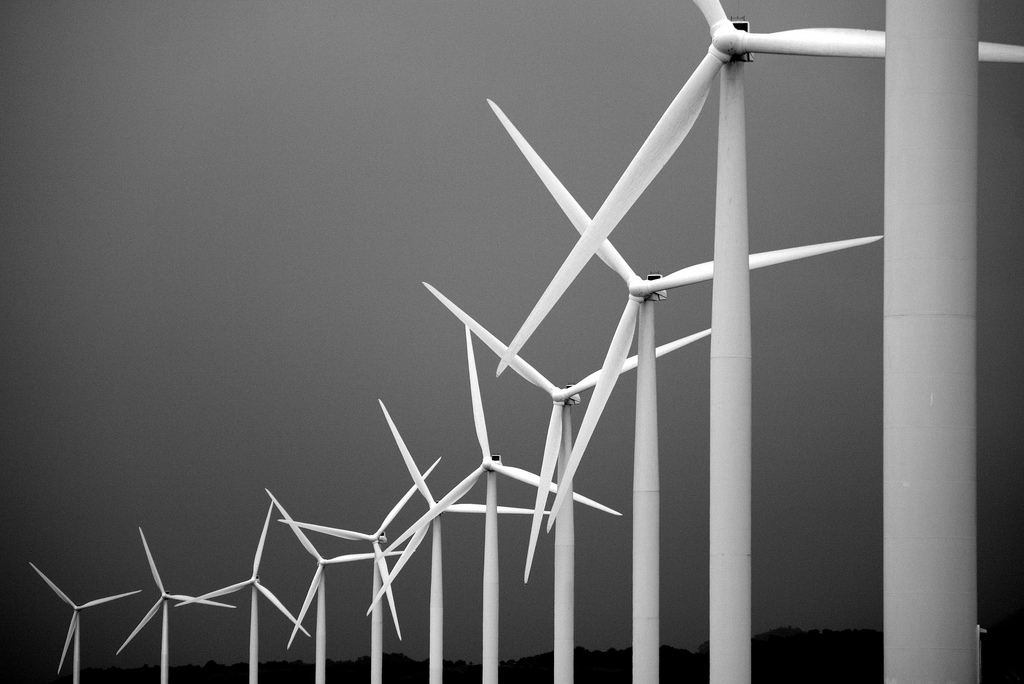Green Vote Drives Obama’s Energy Agenda
President-elect Barack Obama is emphasizing green investment. Though he wasn’t the only candidate talking green during the campaign, he was the chief beneficiary of the environmental vote.
Jul 31, 20203.7K Shares741.1K Views
Flickr: .bullish
Over the last few days, in discussing his plans for stimulating the nation’s limp economy, President-elect Barack Obama has placed strong emphasis on green investment. That includes a green jobs program, which could invest up to $100 billion in projects with energy efficiency and clean energy goals.
The idea that green goals are central to Obama’s economic mission demonstrates that his campaign rhetoric was more than just talk. And Obama wasn’t the only candidate talking green this election season. Sen. John McCain (R-Ariz.), his GOP opponent, also ran on an environmentally aware platform. He talked about battling climate change and reducing dependence on foreign oil. So did many candidates running for office in states across the country.
Illustration by: Matt Mahurin
Of course, politicians’ interest in the environment was spiked by this past summer’s record oil prices and the resulting sticker shock at the gas pump. While gas prices have plummeted since, to below $2 a gallon in some parts of the country, consumers don’t seem to be returning to their old driving habits. Federal data indicate that Americans are still driving fewer miles.
Public opinion related to energy made for a unique national election in 2006. Consumers’ concerns about energy use and the environment carried through on Election Day, with pollsters and environmental advocates saying that many Americans voted with these issues in mind in casting their presidential ballot. There were also many state and local initiatives related to the environment and energy.
Obama seems to have been the chief beneficiary of the “environmental” vote. One reason is that young voters turned out in record numbers — and they rank energy and the environment higher on their priority lists than other voter groups. About 24 million people under age 30 voted in the presidential election — up 19 percent, or 2.2 million, from 2004, according to exit polls.
Fully 64 percent of these young voters said the environment was “very important” to their vote, compared with 55 percent of older voters, according to a poll conducted by the Pew Research Center in October. Pre-election polls also found that young voters tended to favor Obama’s energy plan, which stressed development of alternative energy sources, over that of McCain, which talked about offshore oil drilling and more nuclear power plants.
Some post-election polls confirmed the electorate’s concern about energy and the environment. A Sierra Club poll released Nov. 6 reported that 50 percent of its respondents said energy-related issues played a role in how they voted. Of those, 49 percent said Obama had a better plan for investing in clean energy to create jobs than McCain, who was at 35 percent.
The Sierra Club says it plans to do additional research in the coming weeks to determine how its poll results break down demographically. The group’s researchers said that they expect to find that energy-related issues like global warming were more important to young voters.
CNN’s exit polling on Election Day showed that, overall, energy policy was the most important issue to 7 percent of voters. While that pales in comparison to the economy, voters still ranked energy fifth in importance. Of those voters who ranked energy as the most important issue, 50 percent voted for Obama while 46 percent voted for McCain.
The presidential vote was not the only indicator of the increasing importance of energy and the environment to voters. In several states, a number of initiativeson the issues appeared on the ballot. The message was mixed.
In California, two measures were up for a vote. Proposition 7 would have required utilities to increase their dependency over time on renewable energy to generate power. Proposition 10 would have used bond money to reward buyers of more fuel-efficient or alternative-fuel cars, as well as to promote clean-energy research and development.
Both measures went down to defeat largely becauseenvironmental groups opposed them. The environmentalists contended that Prop 7 was so vaguely worded that it might have done more harm than good to the solar industry, while Prop 10 was considered a handout to the natural-gas industry.
California voters did pass Proposition 1A, which partly funds a high-speed train connected Northern and Southern California, and Proposition 2, which prohibits confining livestock.
In Colorado, voters struck down an amendment that would have raised taxes on oil and gas companies to fund college scholarships, conservation, renewable energy and water treatment. They also voted against a counter-initiative to that amendment, which would have channeled money from the Dept. of Natural Resources to a transportation trust fund to ease congestion.
In other states, initiatives favoring the environment fared better. In Missouri, voters wanted 15 percent of the state’s electricity to be generated from clean sources by 2021. Floridians favored a property-tax exemption for land that falls under permanent conservation protection. Minnesotans voted to increase funding for natural-resource protection programs. Ohio voters authorized the state to borrow $400 million for environmental conservation. And in Washington, voters backed an $18-billion mass-transit project.
But it was the increased presence of environmentally conscious young voters that consistently marked this election. Energy Action Coalition, a coalition of organizations, worked to get out the youth vote by running a nonpartisan campaign called “Power Vote.”
“What we saw from literally millions of conversations,” said Brianna Cotter, head of the Power Vote campaign, “is that young people who pledged to vote understood the connection between our country’s energy choices, the economy, health care and national security.”
Cotter told one story about galvanizing the youth “green vote” in Florida. A precinct in Gainesville, Fla., where many University of Florida students vote, had a 60 percent increase in youth voter turnout this year. “That’s where we had an incredibly active group of ‘power voters,’” she said. “We had 2,000 young people in that precinct commit to vote [on energy and the environment].”
Sierra Club spokesman David Willett said this level of interest in environmental issues is unprecedented in a presidential race. Why that was so is unclear. For example, did energy rank high in voters’ minds because of the work of groups like Sierra Club, or because the presidential candidates talked a lot about it?
Youth grass-roots campaigns like Power Vote, though, had an effect on how young people voted, Willett believes.
“[Energy Action Coalition] did a lot of voter registration, and that certainly helps because once [an environmental group] registers people,” Willett said, “they’re primed to hear a positive message about clean energy — which Obama was giving them.”
Still, there were factors beyond organizers’ control that contributed to the increased voter interest in energy.
Gasoline at more than $4 a gallon “was part of the evolution of the environment as an issue,” said Gallup spokesman . “More and more, [people] are seeing it as a problem and talking about it more, so the two [presidential] candidates were reflective of it.”

Hajra Shannon
Reviewer
Latest Articles
Popular Articles

